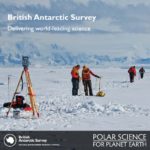Variability of the Ross Gyre, Southern Ocean: drivers and responses revealed by satellite altimetry
1 June, 2018 by Michael Meredith, Paul Holland
Year‐round variability in the Ross Gyre (RG), Antarctica, during 2011‐2015, is derived using radar altimetry. The RG is characterized by a bounded recirculating component, and a westward ‘throughflow’ to the…
